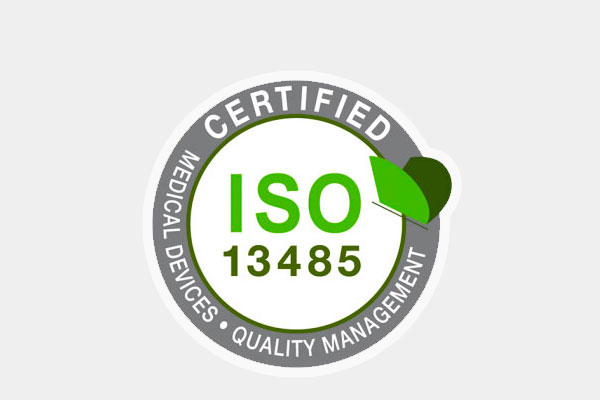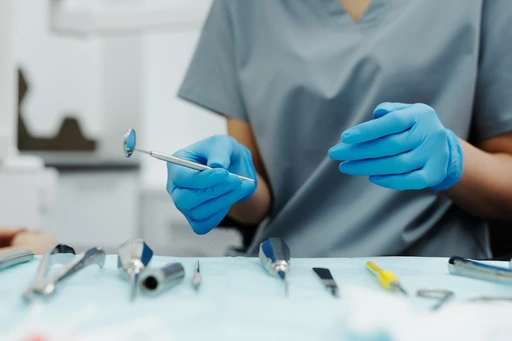ISO 13485 Audit Services
ISO 13485 Audit Services to Ensure Compliance and Quality in Medical Device Manufacturing
The medical device industry must produce safe and effective products to diagnose and treat diseases. Industry requirements are on the increase as regulatory bodies, standards organizations, and patients expect ever more safety and effectiveness.
ISO 13485 is the global quality management system standard for medical devices. Pro QC International supports manufacturers and sellers of medical devices to implement ISO 13485:2016 using supplier management and third-party ISO 13485 audits.
Pro QC’s ISO 13485 audit services are based on factual observations and are performed by our certified auditors. The audit follows the 2016 version of the standard and typically requires 2 days for the onsite audit and reporting for a medium-sized factory with 50 – 300 employees. Additional checkpoints or requirements, such as elements of ISO 14644 (cleanrooms and associated controlled environments) or sterilization processes can be supported.
Contact Us
Assess your supplier’s ISO 13485 system to ensure they uphold the integrity of your quality standard
ISO 13485 Audit Introduction
ISO 13485:2016, in its latest version, is an international standard that “specifies requirements for a quality management system where an organization needs to demonstrate its ability to provide medical devices and related services that consistently meet customer and applicable regulatory requirements.”
A robust ISO 13485 is often implemented in conjunction with the general standard ISO 9001. ISO 13485 provides a solid framework to guide an organization in addressing the requirements in the medical device industry.
A factory that is ISO 13485 certified usually indicates that they have the necessary systems in place to meet the industry requirements and are likely to present fewer quality risks.
Medical Device File (MDF) and Design Master Record (DMR)
ISO 13485:2016 requires the organization to establish and maintain a Medical Device File (MDF) for each medical device type or family. In the US, 21 CFR 820 demands a Device Master Record (DMR), which is equivalent to the MDF. At a minimum, each MDF/DMR should include the following:
Intended use/purpose and labeling, including any instructions for use.
Product descriptions, technical drawings, functional specifications, raw material specifications, component specifications, software specifications, bill of materials (BOM), approved vendor list, etc.
Process specifications or procedures usually include but are not limited to storage environment specifications, production methods, assembly plans, cleanliness and sterilization processes, control plans, work instructions, etc.
Control plan, validation and verification, quality assurance, test instructions, instructions for operating monitoring and measuring equipment.
Instructional information on how to install the medical device, installation checklists, verification specifications, training/competence requirements, acceptance criteria, and release procedures.
Specification for service activities which can include service plans, service programs, maintenance plans, checklists, protocols, and training/competence requirements
Factories that are certified with ISO 13485 are likely to present
fewer risks when working with them
Advantages of an Effective ISO 13485 QMS
Working with a supplier that is certified ISO 13485 certified has brought immense returns to companies of every scale and specialty. Certified suppliers usually:
Have a systematic and process-based approach. This includes examining not just processes but the connections between processes. They base decisions on data and solid evidence.
Put the client first. They emphasize translating customer needs and requirements into systematic processes that can achieve the required outcome.
Have a continuous improvement system built into their day-to-day practice. They promote a culture of customer feedback, employee engagement, and an upward spiral of quality.
Achieving and certifying against ISO 13485 is often the easy part. Maintaining an effective ISO 13485 QMS requires dedicated resources and discipline, and this is where many factories fall short of expectations. For this reason, it is important to routinely assess your supplier’s ISO 13485 system to ensure they uphold the integrity of your quality standard.
Pro QC’s ISO 13485 Audit Approach and Checklist
The main categories of Pro QC’s ISO 13485 audit checklist are the following:
- General Requirements
- Documented requirements
Includes management commitment, customer focus, quality policy, planning, and management review responsibilities.
- Human Resources
- Infrastructure
- Work Environment and Contamination Control
- Planning of Product Realization
- Customer-Related Processes
- Design & Development
- Purchasing Process
- Production and Service Provision
- Control and Monitoring of Measuring Equipment
- General
- Monitoring and Measurement
- Control of Nonconforming Product
- Analysis of Data
- Improvement
Pro QC ISO 13485 Audit Outcomes
Organized audit report presented in exhaustive detail
Pro QC clients can expect an organized audit report presented in exhaustive detail. Each ISO 13485 audit requirement will be compared to the actual condition, citing objective evidence such as photos, interviews, and examined records and documents. All findings will be explained in concise language and color-coded to indicate compliance, improvement needed, or noncompliance.
The report will present quick-to-grasp visuals and a summary with a strengths diagram, an overall audit score, and high-priority recommendations. Nonconformances will be flagged, and those that are the highest risk will be paired with recommended remediation activities. Nonconformances will be rated either high, medium, or low risk which allows for expedited decision making when dealing with a large supplier portfolio.
Corrective action plan
The ISO 13485 audit report is only the first step. Pro QC supports a client in reaching full compliance with the standard. This means assessing the level of compliance against ISO 13485 and identifying nonconformances during the audit. Then, a corrective action plan is established, and finally, corrective action implementation is verified through comprehensive follow-up activities.


Pro QC International
Our Service Reports
Detailed & Actionable
- Following International & Industry Standards
24 Hours
- Report Delivery forInspections
48-72 Hours
- Report Delivery for Audits
Download Sample Reports
Pro QC Blog Posts & Related Offerings
Find out more about our related services by clicking below:
Click Below to Improve Product Quality with Pro QC
Contact usGet a Quote or Book a Service
We will be happy to give you more information about our quality solutions. Please fill in this form to contact us. We will respond as soon as possible.
If you would like to submit your CV, please click here.
Contact Us by Email
Contact Us by Phone
North America
+1 206 397 1145
Mexico
+52 55 9990 7885
Colombia
+57 601 9190355
United Kingdom
+44 330 094 5589
France
+33 9 7303 6784
Germany
+49 15630 810151
Australia
+61 2 8252 7691
India & South Asia
+91 120 508 9113
Asia & Asia Pacific
+886 2 2832 2990
Stability
Pro QC has been providing quality assurance, engineering and consulting services since 1984.
Global Presence
We offer a dedicated Account Manager and quality solutions in over 100 countries.
Timely Feedback
We offer online reporting and detailed reports within 24 hours of job completion.
Quality Experts
Our global engineering team has the requisite industry expertise to verify quality and conformance.


